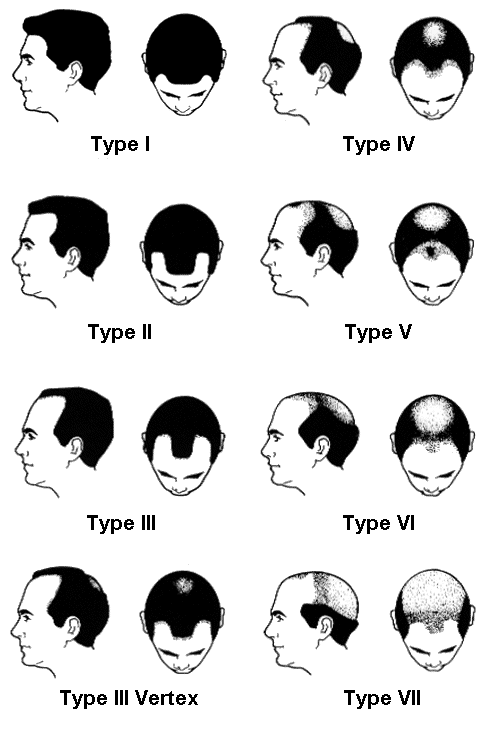Male pattern baldness is classified under the Norwood Male Pattern Baldness Classification System. This system is used during the diagnosis and recognizes seven categories along with subcategories. Physicians use this primarily during the diagnosis of androgenetic alopecia.
The scale under Norwood Male Pattern Baldness classification is as follows:
Type I — Minimal or no recession of the hairline.
Type II — Definite recessions at each side of the temples which are usually symmetrical.
Type III – Classified as “baldness” with deep recessions at temples.
Type III Vertex – Includes recession at the temples and start of a bald spot at the top (vertex) of the head.
Type IV – Includes significant hair loss at the crown, more severe recession at temples, the bald spot at the vertex, and a band of thicker hair across the top of the head.
Type V – Recession in the front of the hair with less division between the temples and a narrower band of hair from the front and temples.
Type VI – No strip of hair across the crown with front temporal and vertex regions joined together since the amount of hair loss is greater.
Type VII – Consists of a narrow band of hair on the sides and back of the scalp that is not dense with sparser hair in a semi-circle over the ears.



